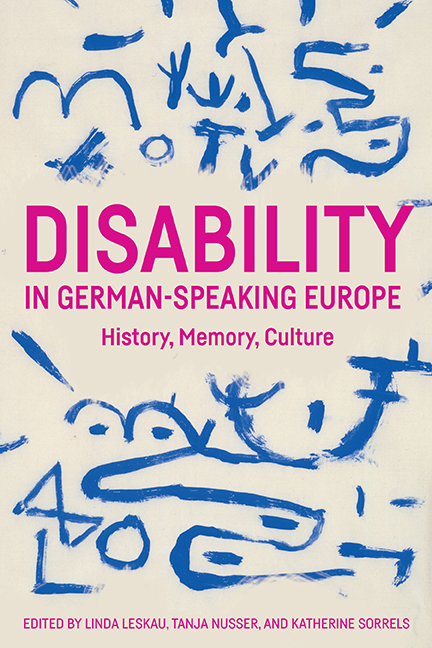6 - Disability in Nazi Germany: Memory of “Euthanasia” Crimes and Commemoration of Their Victims
Published online by Cambridge University Press: 16 July 2022
Summary
Introduction
OPPRESSIVE OTHERING” refers to processes by which social agents ascribe deviant characteristics to others, oppress them, and justify their oppression as a necessary and appropriate response. In Nazi Germany, oppressive othering included “euthanasia.” It involved the deaths of over three hundred thousand persons. “Euthanasia” was a state-organized program that targeted individuals with psychiatric, developmental, and physical disabilities, the sick, the frail, and those considered otherwise deviant or on the margins of society. Central to the program was the operation of six gassing facilities; the systematic murder of minors at about thirty sites where the “children's euthanasia” program was implemented is much less known today.
Commemoration of “euthanasia” victims, especially minors, is often a local event, deriving from the initiatives of “memory agents.” Using commemorative vehicles such as exhibits, stumbling blocks, stage plays, monuments, memorials, or portraits of victims in old and new media, the function of such events is to mobilize and engage an audience in order to restore memories of the victims, and with it of the historical events as well. Often initiated by grassroots activists, such mnemonic practices are embedded in and occasionally conflict with larger national memory landscapes and memory regimes.
The argument made in this chapter is that the interplay of national memory regimes and local mnemonic communities, which often included disability activist groups as well as victims and their descendants, have been crucial in shaping “euthanasia” memories. The analysis shows, first, how “euthanasia” murders related to Nazi bio-politics; second, how different memory regimes emerged and operated in Austria and West and East Germany; and third, how these memory regimes influenced mnemonic practices at four sites: the “T4” gassing center Bernburg and the “special children wards” at Waldniel, Leipzig and Leipzig-Dösen, and Vienna.
“Euthanasia” and Nazi Bio-Politics
Historian Hans-Walter Schmuhl has coined the term “bio-political developmental dictatorship” to describe a totalitarian state with a government eager to determine its current state and future via bio-politics. The term applies to the Nazi extermination program for people with disabilities. It was the outgrowth of a social Darwinist ideology that viewed them, as legal scholar Karl Binding and the psychiatrist Alfred Hoche argued in the book Allowing the Destruction of Life Unworthy of Living in 1920, as “empty human shells” who pose a crushing burden to society and their family members.
- Type
- Chapter
- Information
- Disability in German-Speaking EuropeHistory, Memory, Culture, pp. 130 - 154Publisher: Boydell & BrewerPrint publication year: 2022

